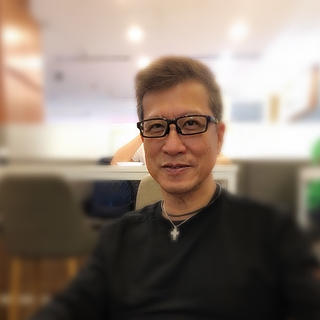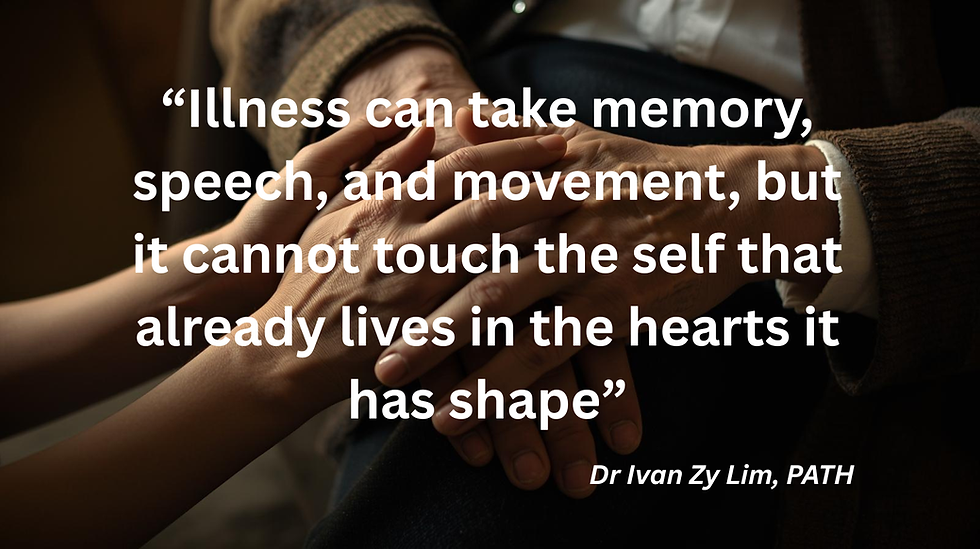The Forgotten Ones at the Edge of the City: How PATH Helps Us Listen to the Lonely
- Ivan Lim
- May 26
- 4 min read

I once sat across from an 82-year-old man who told me, without bitterness, that he hadn’t had a real conversation in weeks.
His children lived overseas. His neighbors rarely opened their doors. The TV had become his only companion.
He said, “It’s like I’m still alive, but fading out. Quietly.”
He smiled when he said that. But behind the smile was a truth too many of us prefer not to see.
In Singapore, as in much of the developed world, our elderly are disappearing in plain sight.
They are alive, but fading. Quietly.
The Silent Epidemic
A recent Straits Times report found that a growing number of seniors in Singapore are calling helplines—not for money, not for medication, but for someone to talk to. Some just want to hear a human voice before they sleep. Others call because they’re not sure how much longer they can keep going without being seen.
They speak of loneliness as if it’s a neighbor. It visits daily. It doesn’t knock.
This isn’t just a Singaporean problem. The World Health Organization now classifies loneliness as a pressing public health issue. In the U.S., the Surgeon General recently called it an epidemic. In Japan, they’ve appointed a “Minister of Loneliness.” And in the UK, charities like Silver Line are receiving tens of thousands of calls every month from elderly individuals simply looking for connection.
We’re living longer than ever before, but many are not living well. And this isn’t just a demographic issue. It’s a spiritual, cultural, and relational crisis.
So where do we turn when numbers, policies, and surface-level fixes fall short?
I believe the answer begins with listening differently.
And that’s where the PATH framework comes in.
Listening at the Edges: What PATH Sees That Others Don’t
PATH—Psychotherapy Anchored in Transcultural Harmony—isn’t just a clinical model. It’s a way of seeing. A philosophy of care. A quiet rebellion against therapies that forget the soul.
It blends modern psychology with ancient Asian wisdom. Not to dilute either, but to create a fuller language for human suffering—and healing.
At its heart, PATH listens for disharmony—within the person, between the person and their family, and between the person and the greater rhythm of life.
When an elderly person says, “I feel forgotten,” we don’t jump to fix. We lean in. We ask: What roles once gave you dignity? What relationships once held you steady? What meaning feels missing now?
Because in PATH, loneliness is not just the absence of people.
It’s the erosion of meaning. Of ritual. Of place.
What Loneliness Looks Like in PATH
Confucian Lens: A lonely elder is not just an individual in distress. They are a role unfulfilled. A grandparent without grandchildren nearby. A wisdom-keeper with no one to receive the story.
Buddhist Lens: Loneliness is clinging—to the past, to identity, to what was. Healing begins not by denying grief, but by softening into impermanence.
Daoist Lens: Loneliness is resistance to the flow. The river of life is still moving, but the elder may feel stuck on the shore. PATH helps them re-enter the current.
Western Psychological Lens: Loneliness affects mood, cognition, immunity, and life expectancy. But these are not just data points—they are calls to restore connection, not just extend life.
What Healing Looks Like in PATH
In a PATH-informed elder circle, you might see something like this:
An old woman teaching younger volunteers how to fold dumplings.
Not just for fun. As ritual. As memory. As connection.
An elder man writing a letter to his younger self, with a facilitator gently asking:
“What would you tell the 30-year-old you who feared being alone?”
A family sitting down for a PATH-guided dialogue, asking,
“What does respect look like now that Grandpa no longer walks without a cane?”
A group of seniors doing slow breathing while listening to the sounds of a nearby park,
as a gentle reminder: You are still part of the living world. You still belong here.
This Is Not Sentiment. This Is Survival.
We cannot therapy our way out of a societal forgetting.
We need deeper roots.
Elder loneliness is not just the outcome of being old. It’s the cumulative result of a society that values speed over presence, productivity over wisdom, and individualism over interdependence.
PATH invites us to turn back—to restore the forgotten bridges between generations, cultures, and hearts.
Because our elders are not a problem to be solved. They are a part of our collective soul we’ve neglected.
And when we lose them—not just physically, but relationally, spiritually—we lose something of ourselves.
A Closing Thought
What if the antidote to elder loneliness isn’t in more apps, more medicine, or even more helplines?
What if it starts with this simple question:
“Who are the elders in your life that need to be seen—not just helped, but honored?”
Don’t wait for a crisis to reach out.
Don’t assume someone else will.
Pick up the phone. Ask about their story. Invite them to teach you something.
Not as charity.
But as restoration.
We don’t need more clever systems.
We need more sacred attention.
That’s what PATH teaches.
And perhaps, in these uncertain times, that’s what will save us.
Dr. Ivan Zy Lim is a Clinical Psychologist, trauma-informed consultant, and the creator of the PATH framework. He integrates Confucian, Daoist, and Buddhist philosophy with Western psychotherapy to address complex issues of suffering and meaning in multicultural contexts. He still practices Hung Gar Kungfu with his elders.





Comments